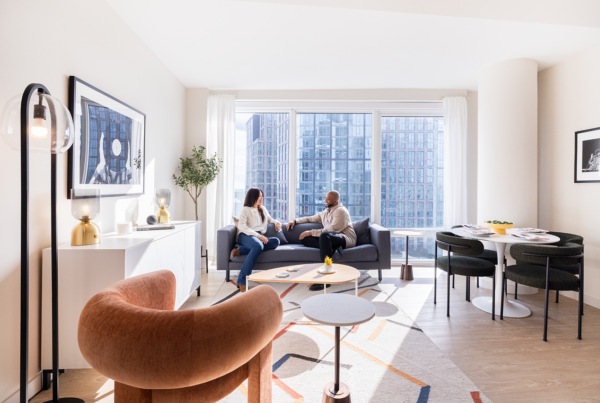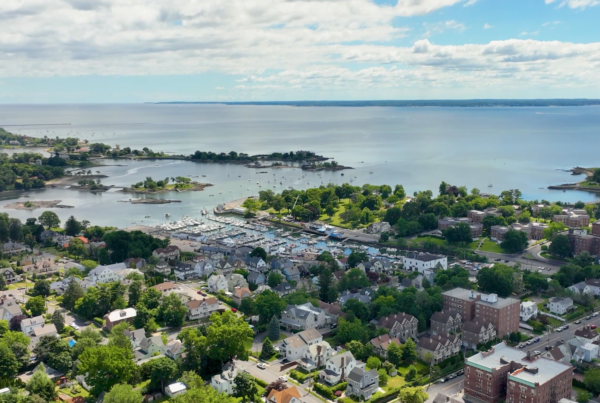The architect Paul Rudolph once said, “Most buildings that really count have multiple scales. Buildings need to be understandable in their varying dimensions…”
The Knightsbridge Park team is highlighting the singularity and variety of four LGBTQIA architects from the 20th and 21st centuries whose stories you might not know, even if you recognize and admire the innovative buildings and spaces they designed. Their achievements encompass a spectrum of styles within modernism and postmodernism.
Philip Johnson’s lifespan nearly mirrored the 20th century itself (1906-2005), and it’s hard to think of a single figure who was more influential in making modernism the visual language of the postwar era.
He designed his iconic Glass House in New Canaan, Connecticut, in 1949. Johnson collaborated with Ludwig Mies van der Rohe on the 1958 Seagram Building, which was an early forerunner of the glass-and-steel office towers that are now so ubiquitous in American cities. He was awarded the inaugural Pritzker Prize in 1979.
By embracing a new approach to postmodernism later in his career, veering away from the classic modernism he championed in the mid-20th century, Johnson demonstrated professional courage and open-mindedness.
Paul Rudolph (1918–1997) was a contemporary of Johnson’s and is a bit less well-known, perhaps because the style he loved most was one of the most polarizing of the 20th century.
Rudolph was a proponent of brutalism, the evocatively named movement within modernism in which raw building and structural materials took center stage, with minimal ornament or decoration. Rudolph was influential as the dean of the Yale School of Architecture, which he joined in 1958.
Architect Phyllis Birkby (1932-1994) was born a little bit too early to benefit from the Women’s Movement, at least initially. She recalled later in her life that, when looking at her grades and test results, a high school guidance counselor said, “If you were a man, you should be studying architecture.”
She studied fine art at the Women’s College of the University of North Carolina in Greensboro and moved to New York City to work as a technical illustrator in 1954. She enrolled in a night school program at Cooper Union, earning a Certificate in Architecture in 1963, then enrolled at the Yale School of Architecture, where she studied under Paul Rudolph. She was one of six women in a department with more than 200 men.
She was a founding member of the Alliance for Women in Architecture at the height of the women’s movement and came out as a lesbian in 1973—then an almost unheard-of act of bravery.
In a sign of how much has changed in the past two centuries—when the idea of coming out or even identifying as LGBTQIA was often unthinkable—we were honored to work recently with an architect who was named to the OUT Magazine 2017 list of 100 most influential people of the year: Jane Greenwood.
When she was named to the OUT 100, Greenwood told the magazine that she hopes her being out encourages others in the field to feel secure in being who they are, adding, “There has always been a cause worth fighting for in our community. The topics may change, but the need to speak out has not. I’m still fired up after all these years.”
The LGBTQIA community has much to be proud of. And the resilience of this larger community is matched by the resonant artistry and professionalism of these four architects.


